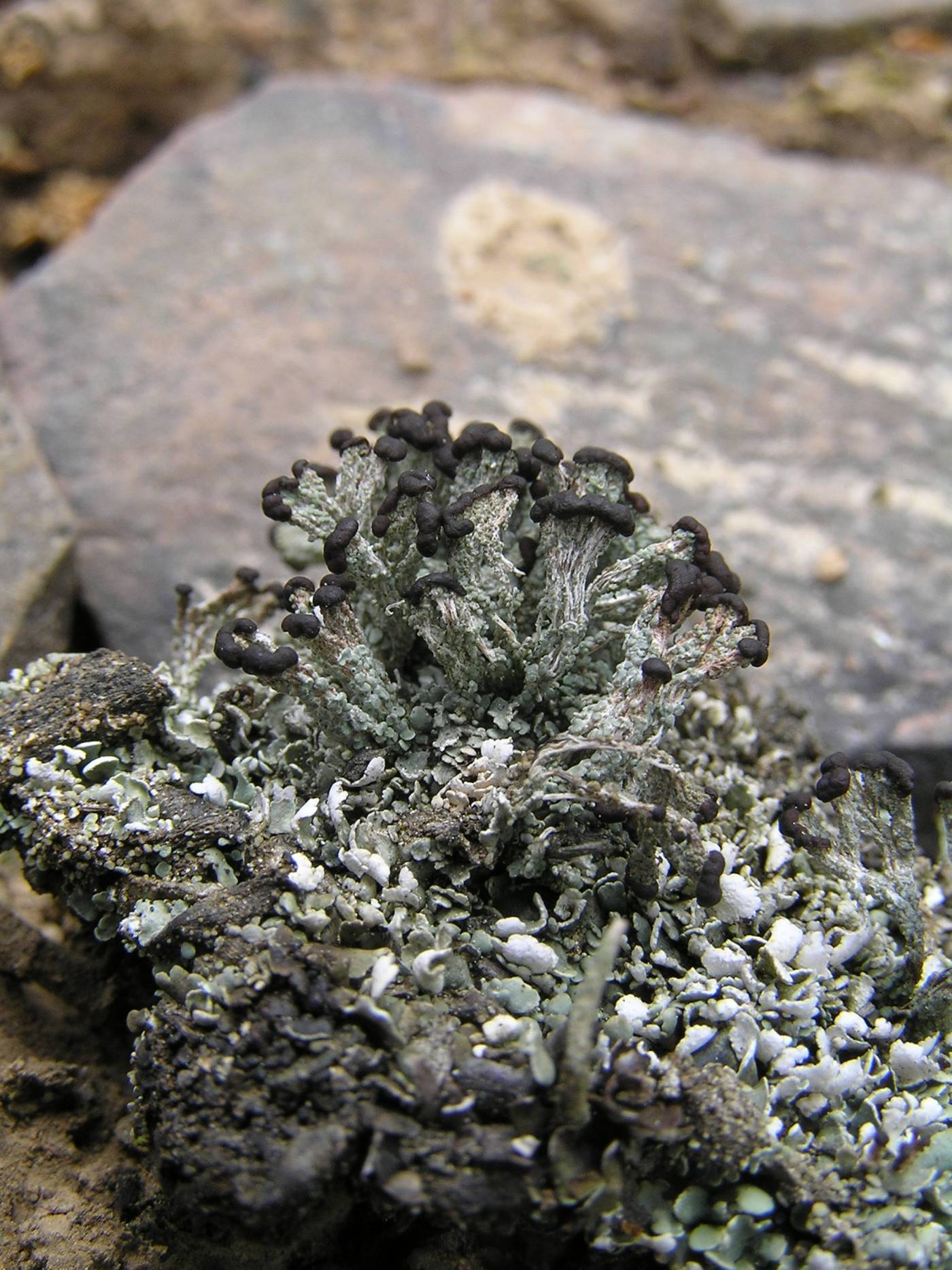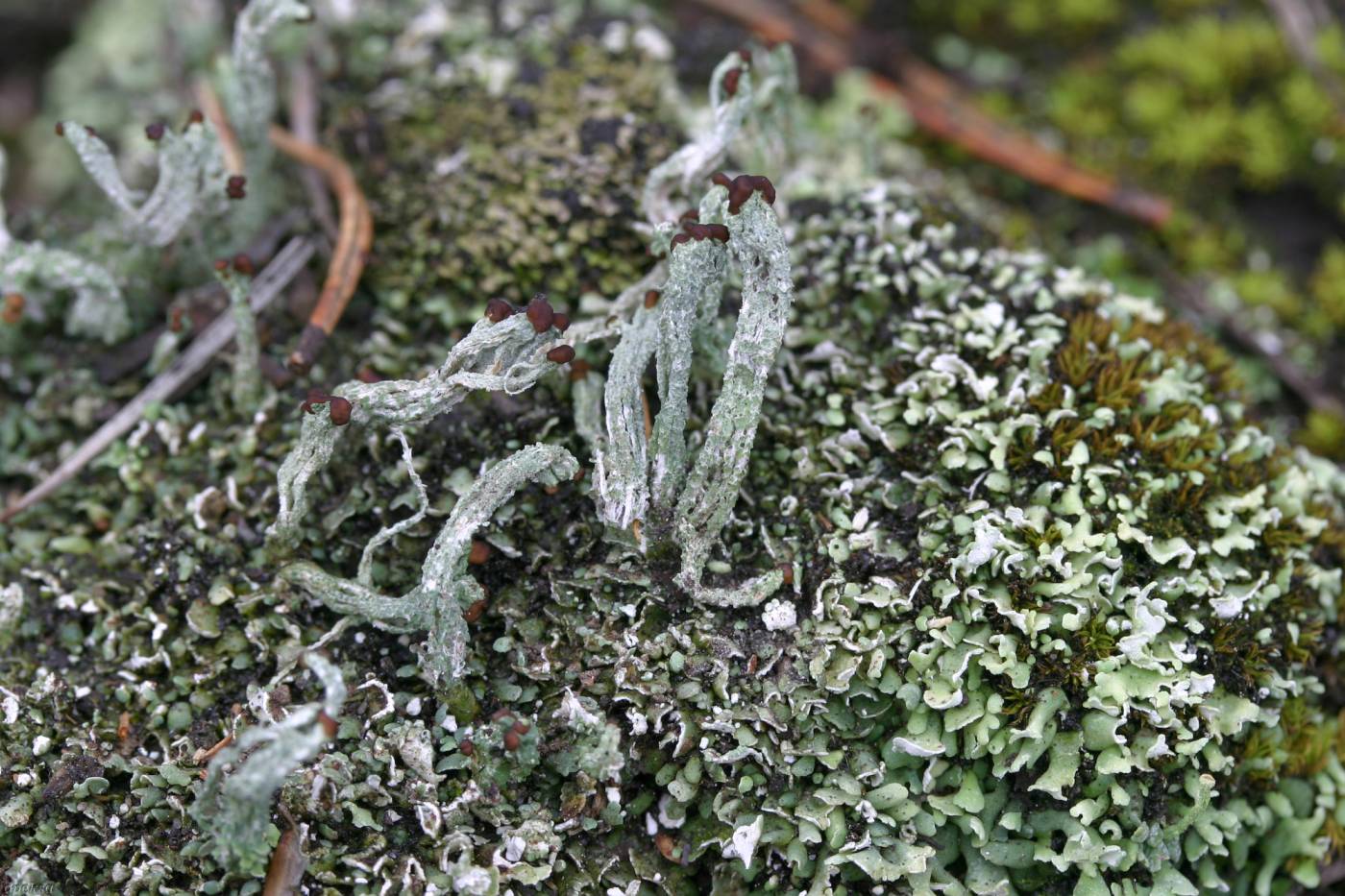Usually richly fertile, with slightly branched podetia, with torn-like appearance, and cracked cortex with small squamules peeling off from it. However, podetia are often absent and the identification is problematic in those cases. It is a polyphyletic taxon consisting of at least four lineages (Burgaz et al. 2020). The lichen is very variable both morphologically and chemically, producing a variety of secondary metabolites (Osyczka & Skubała 2011, Pino-Bodas et al. 2012). Sometimes, it may be difficult to distinguish it from the chemically identical forms of C. symphycarpa. According to molecular phylogenetic studies (Pino-Bodas et al. 2012), C. cariosa s. str. is a species of calcareous substrates, and includes morphotypes with small primary squamules and richly fertile and richly branched, longitudinally fissured podetia. Even in its strict definition, the species is chemically variable; atranorin is always present, often (but not always) in combination with rangiformic and/or fumarprotocetraric acid. Norstictic and psoromic acid chemotypes were not found in C. cariosa s. str. (Pino-Bodas et al. 2012).
C. cariosa s. lat. is a pioneer terricolous species, found on nutrient-poor, disturbed acidic to basic soil. It grows from lowlands to mountains on various types of natural and anthropogenic stands, such as heathlands, sandbanks, shallow mineral soil on open rock outcrops and steppes, heap piles or railway embankments. In Europe, the lichen is distributed all over the continent. In the Czech Republic, it is quite rare nowadays, mainly found on anthropogenic stands, such as sand quarries or heap piles. Compared to older literature (e.g., Kovář 1912, Černohorský et al. 1956), C. cariosa has obviously declined, probably due to eutrophication, succession of its localities and absence of suitable management (such as grazing) that would ensure periodic disturbance.
Literature: Osyczka P. & Skubała K. (2011): Chemical races of Cladonia cariosa and C. symphycarpa (lichenized Ascomycota) – a Polish case study in a worldwide context. – Nova Hedwigia 93: 363–373. Pino-Bodas R., Burgaz A. R., Martín M. P. & Lumbsch H. T. (2012): Species delimitations in the Cladonia cariosa group (Cladoniaceae, Ascomycota). – Lichenologist 44: 121–135. Kovář F. (1912): Moravské druhy rodu Cladonia. – Věstník Klubu přírodovědeckého Prostějov 15: 85–190 & 193–199. Černohorský Z., Nádvorník J. & Servít M. (1956): Klíč k určování lišejníků ČSR. I. díl. − ČSAV, Praha. Malíček J., Bouda F., Kocourková J., Palice Z. & Peksa O. (2011): Zajímavé nálezy vzácných a přehlížených dutohlávek v České republice. – Bryonora 48: 34–50. Burgaz A. R., Ahti T. & Pino-Bodas R. (2020): Mediterranean Cladoniaceae. – Sociedad Española de Liquenología (SEL), Madrid.
taxonomic classification:Ascomycota → Lecanoromycetes → Lecanorales → Cladoniaceae → Cladonia
Red List (Liška & Palice 2010):EN – endangered
Red List (Malíček 2023):C3 – endangered
Occurrence in the Czech Republic
All records: 68, confirmed 59. One click on a selected square displays particular record(s), including their source(s).


